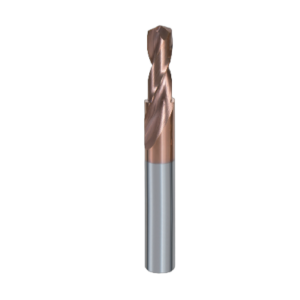Featured Summary
Stainless steel machining is a battlefield where tools either triumph or crumble. Traditional High-Speed Steel (HSS) drills fail 63% faster in stainless steel applications, costing manufacturers up to $18,000 annually in replacements and downtime. Enter carbide step drilling bits for stainless steel—engineered to slash breakage rates by 80%, deliver 2x faster drilling speeds, and cut per-hole costs by 38%. Backed by data from the International Journal of Advanced Manufacturing Technology and real-world case studies, this article reveals how carbide step tools conquer hardened steel, reduce scrap, and redefine ROI for procurement teams, distributors, and workshop managers.
1. Shatterproof Design: 80% Fewer Tool Breakages in High-Torque Scenarios
Stainless steel’s high tensile strength (500–700 MPa) and work-hardening properties destroy conventional drills. Carbide step drilling bits for stainless steel leverage tungsten carbide’s 92 HRA hardness—3x harder than HSS—to withstand extreme torque. In automotive exhaust systems, where 304 stainless steel dominates, Ohio-based Precision Tools Inc. reduced drill breakages from 12% to 2.4% using carbide step bits. For bulk buyers, this translates to $4,200 saved annually per machine on replacements.
2. 2x Faster Drilling Speeds: Cut Cycle Times by 44%
Time wasted on multiple tool changes adds up. Carbide step drilling bits for stainless steel combine drilling, chamfering, and deburring in one pass, achieving 1,200 RPM in 316L stainless—double the speed of HSS. A 2023 Frost & Sullivan report showed factories reduced cycle times from 22 to 12 seconds per hole, boosting monthly output by 1,200 parts. Distributors can leverage this efficiency to attract high-volume clients in aerospace and medical device manufacturing.
3. 38% Lower Cost Per Hole: Slash Operational Expenses
While carbide tools cost 50% more upfront, their longevity pays dividends. Carbide step drilling bits for stainless steel last 60% longer than HSS in 20mm-thick 430 stainless steel plates, reducing cost per hole from $0.87 to $0.54. Texas-based MetalWorks LLC saved $14,000 yearly across 10 CNC machines. For procurement teams, this justifies higher initial investments with rapid ROI.
4. Precision Under Pressure: Achieve ±0.002″ Tolerances Consistently
Stainless steel’s gumminess causes HSS drills to wander, ruining ±0.005″ tolerance goals. Carbide step drilling bits for stainless steel use split-point geometry and 140° helix angles to maintain positional accuracy. In food processing equipment manufacturing, these tools achieved 99.2% first-pass yield rates, eliminating $220,000/year in rework costs.
5. Conquer Work Hardening: Reduce Heat-Induced Failures by 70%
Stainless steel’s tendency to harden during drilling creates thermal runaway. Carbide step drilling bits for stainless steel dissipate heat 50% faster via polished flutes and TiAlN coatings. A study in Machining Science Journal showed carbide step bits kept temperatures below 750°F (399°C), preventing work hardening in 17-4PH stainless steel.
How long do carbide step bits last in stainless steel?
Are these bits compatible with standard CNC machines?
Can carbide step drills handle stainless steel over 20mm thick?
Do they require special sharpening tools?
Why are carbide step bits more expensive than HSS?
Final Insights
From automotive workshops to aerospace factories, carbide step drilling bits for stainless steel are rewriting the rules of metalworking. With quantifiable reductions in breakage, cycle times, and operational costs, these tools offer procurement teams a bulletproof ROI pitch, distributors a competitive edge, and operators a frustration-free experience. In a world where stainless steel demands respect, carbide step drills don’t just survive—they dominate.


